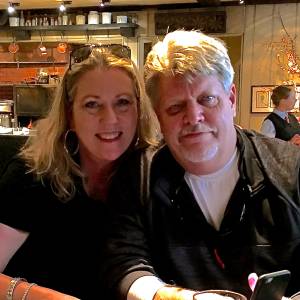...and up.
Hong Kong, September 2014. The Umbrella Revolution.
It was the auspicious start of significant protesting that's been a regular occurrence in Hong Kong since Beijing began imposing China’s claim on the territory – almost 30 years earlier than officially mandated in their agreement with Britain. Dubbed the “Umbrella Revolution” for the colorful umbrellas used by protestors to shield themselves from water cannons, tear gas and other munitions employed by police to quell the uprising, the umbrellas also shielded identities, hid faces – from the police, from the press, from the Mainland military.
The (mostly) peaceful protests were aimed at Beijing’s move to insert pre-approved political candidates from the Mainland into the Hong Kong elections, thereby imposing China’s communist control over what had been, for generations, an essentially democratic (though colonized) territory. Sadly, despite the protests and subsequent legal maneuvers that followed, all aimed at slowing and ultimately dismantling the takeover, Beijing successfully corrupted the Hong Kong election process in 2019.
Chris and I were in Hong Kong in 2014 and often spent a weekend afternoon in Wanchai, one of Hong Kong’s oldest and most expat-friendly neighborhoods. We would join our fellow Westerners, Aussies and South Africans at one of the local sports bars and spend the afternoon cheering on our favorite rugby teams. For us, it was a weekend ritual, sitting at an outdoor table along the bustling streets, keeping an eye on the screens inside, mostly watching the people outside - the bikes, the delivery vans, the carts full of food being whisked into nearby restaurant kitchens, the families with strollers (sometimes carrying babies, sometimes carrying little dogs), kids coming home from afternoon birthday parties or weekend sporting events - all of it woven into the rhythm of the city, a typical Hong Kong weekend afternoon.
Embarking on his regular walk through central Hong Kong to Wanchai one late-Fall Sunday afternoon, Chris knew he had to navigate the massive tent city set up by the protesters around the government buildings. Despite the international news reports telling us "The Hong Kong protests are over, all is back to normal," we knew it was there, you couldn’t miss it; the make-shift encampment covered blocks and blocks of real estate in the very heart of the city, sprawling out into the surrounding neighborhoods with thousands of protesters camping out for what had been, by this point, weeks on end. Their goal: Grind the city to a halt. And it was fraying the nerves of both everyday Hong Kongers, as well as government officials, who, at that time, were still democratically elected to their posts. The persistent activism had also very much caught the attention of Beijing.
Chris took his regular route that Sunday, and it didn’t take long to discover the activism was far from "over." As he forged forward, he suddenly found himself behind the barricades set up to contain the protestors; he was directly inside the protest zone and surrounded by a village of activists leading what could be termed a “normal” Sunday afternoon - cooking food on portable stoves, visiting with their neighbors, handing out water and supplies, some even hanging out clothes to dry. He resisted the urge to take photos of the scene but did manage to turn on his video as he held the phone casually by his side and walked quickly through the encampment. The images he captured are astounding – and, unbeknownst to us at the time, now of important historical relevance.
Later that night, unable to find a taxi in the chaos of midtown, Chris made his way home by foot. The protests had been escalating sharply after dark, and as he approached the tent cities, a policeman stopped him and, in broken English, demanded to know where he was going. Chris indicated he was going toward Central and home, and the policeman shooed him away, watching closely as he departed the scene. He was stopped, questioned and redirected away from the area two more times before he made it home safely that night.
We later learned from news reports that “foreigners” showing up in the protest zones were being carefully monitored by Mainland military units perched atop a mid-town skyscraper in observation stations with a bird’s-eye view of the encampment. It was reported that they were actively searching out and arresting Westerners who were seen giving aid and assistance to the protestors; they were also confiscating cameras. Chris’ instincts not to take photos, to walk quickly and exit the protest area as soon as he could find his way out were probably what kept him off their radar that weekend.
Now, in hindsight, we realize we were experiencing Hong Kong history, the growing storm approaching, a harbinger of the slow dissolution and takeover of our favorite Asian city. But at the time for us, the impact was far more immediate – until the tents came down several months later, we no longer took our usual weekend walks down to Wanchai. And we often found ourselves looking over our shoulders... and up.
- 1
- 0
- Panasonic DMC-GF3
- 1/625
- f/4.1
- 18mm
- 160

Comments
Sign in or get an account to comment.


